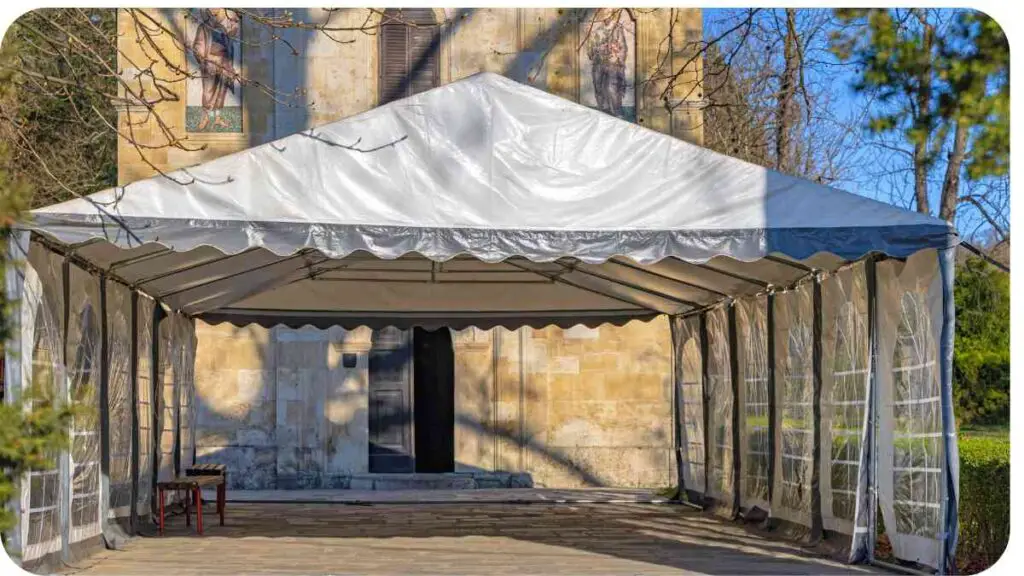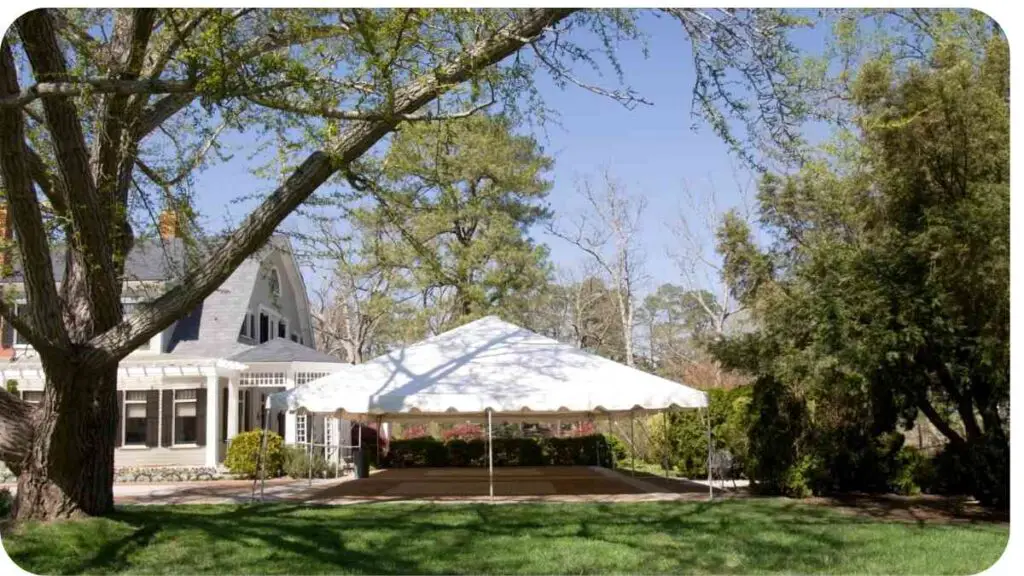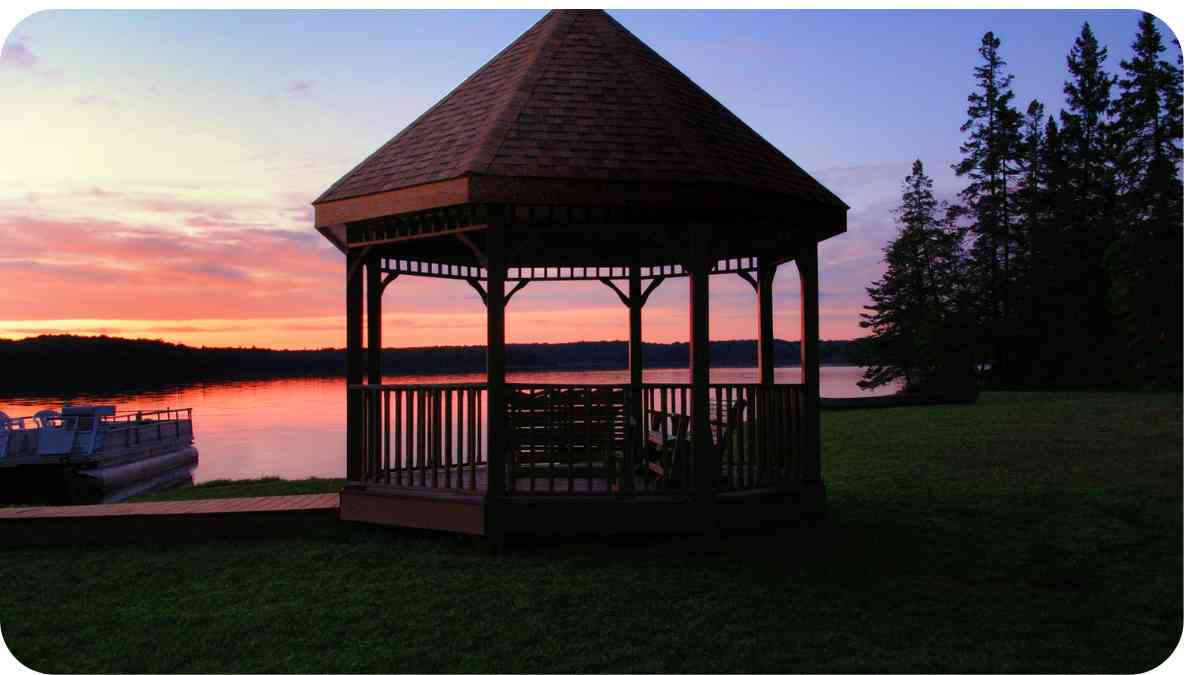If you’ve ever owned a canopy tent, you know they’re a fantastic way to enjoy outdoor events, from markets and picnics to weddings and camping trips. But with great outdoor fun comes the occasional frustration when your canopy tent frame starts to show signs of wear and tear.
Whether it’s bent poles, loose joints, or a wobbly structure, these common issues can turn a pleasant day into a hassle. Fear not! In this guide, we’ll explore quick fixes for these pesky problems to get your canopy tent back in top shape.
| Key Takeaways |
|---|
| Regularly inspect your canopy tent for damage. |
| Use a rubber mallet to fix minor bends in poles. |
| Replace severely damaged poles for safety. |
| Tighten all loose joints and connectors. |
| Secure the frame with weights or sandbags in wind. |
| Patch small tears in the fabric with repair kits. |
| Clean and dry the tent after use to prevent rust. |
| Store the tent in a dry, cool place. |
| Perform routine maintenance for longevity. |
| Follow manufacturer’s instructions for assembly. |
Understanding Canopy Tent Frame Issues

Common Causes of Frame Issues
Canopy tent frames can suffer from a variety of issues due to regular use, exposure to weather conditions, and improper handling. Common causes include:
- Strong Winds: High winds can cause the frame to bend or collapse.
- Heavy Rain: Water pooling on the canopy can add excessive weight, straining the frame.
- Frequent Assembly and Disassembly: Regular setup and takedown can loosen joints and connectors.
- Accidental Damage: Mishandling or dropping parts during transport can lead to damage.
Tools and Materials Needed
Before diving into fixes, it’s essential to gather the right tools and materials. Here’s a handy list to have on hand:
| Tool/Material | Purpose |
|---|---|
| Adjustable Wrench | Tightening loose joints |
| Rubber Mallet | Straightening bent poles |
| Replacement Poles | Replacing damaged poles |
| Duct Tape | Temporary fixes for fabric tears |
| Lubricant Spray | Loosening stuck mechanisms |
| Sandbags/Weights | Stabilizing the frame |
| Cleaning Cloths | Cleaning rust and dirt |
Having these tools ready will make your repair process much smoother.
Fixing Bent or Damaged Poles

Identifying Bent Poles
Bent poles are a common issue with canopy tents, often resulting from rough weather or improper handling. To identify bent poles, set up the frame partially and inspect each pole for visible bends or dents. You can also roll each pole on a flat surface; any irregularities in the roll indicate a bend.
Straightening Minor Bends
For minor bends, a rubber mallet can work wonders. Place the bent section over a sturdy, flat surface. Gently tap the bent area with the mallet, gradually straightening the pole. Always strike lightly to avoid causing further damage.
Replacing Severely Damaged Poles
If a pole is severely bent or cracked, replacement is the best option. Contact the manufacturer for exact replacements or visit a hardware store for compatible poles. Ensure the new pole matches the length and diameter of the original.
| Problem | Solution |
|---|---|
| Minor Bends | Use a rubber mallet to straighten |
| Severe Damage | Replace the pole with a new one |
Tightening Loose Joints and Connectors
Types of Joints and Connectors
Canopy tents typically use a variety of joints and connectors, including:
- Push-button connectors: Common in adjustable poles.
- Screw-together joints: Provide a secure fit.
- Snap-on connectors: Easy to assemble and disassemble.
Tools for Tightening
An adjustable wrench and a screwdriver set are essential for tightening loose joints. Ensure you have the correct size to avoid stripping screws or bolts.
Securing a Wobbly Frame
Diagnosing Wobbliness
A wobbly frame can result from several issues, such as loose joints, uneven ground, or bent poles. Set up the tent on a flat surface and check each connection point for tightness.
Strengthening Connections
Use your adjustable wrench to tighten any loose bolts or screws. For push-button connectors, ensure they are fully engaged. Snap-on connectors should click into place securely.
| Connection Type | Fix |
|---|---|
| Push-button | Ensure full engagement |
| Screw-together | Tighten with an adjustable wrench |
| Snap-on | Confirm secure click |
Repairing Ripped or Torn Fabric
Inspecting for Tears
Regular inspection of the canopy fabric is crucial. Look for small tears, holes, or worn-out areas, especially after events with strong winds or heavy usage.
Patching Small Tears
For small tears, duct tape can provide a quick temporary fix. Clean the area around the tear, apply the tape on both sides, and press firmly. For a more permanent solution, fabric repair kits available at outdoor or camping stores work best.
Replacing Large Sections
If the fabric has large or multiple tears, replacing the entire section might be necessary. Contact the manufacturer for replacement parts or consider purchasing a universal fit canopy cover.
| Damage Type | Repair Method |
|---|---|
| Small Tears | Use duct tape or fabric repair kit |
| Large Tears | Replace the fabric section |
Addressing Stuck or Jammed Mechanisms
Types of Mechanisms
Common mechanisms in canopy tents include:
- Push-button height adjusters
- Slide-and-lock systems
- Spring-loaded connectors
Lubrication and Maintenance
Stuck mechanisms often result from dirt buildup or lack of lubrication. Clean the mechanism with a dry cloth and apply a silicone-based lubricant to keep it moving smoothly. Avoid oil-based lubricants as they can attract dirt and grime.
Preventing Rust and Corrosion
Causes of Rust
Rust typically forms when metal parts are exposed to moisture over time. This can weaken the frame and make it prone to breaking.
Rust Prevention Techniques
To prevent rust, regularly clean and dry your tent frame after use. Apply a rust-inhibiting spray to metal parts and store the tent in a dry place.
| Cause | Prevention |
|---|---|
| Moisture Exposure | Clean and dry after use |
| Metal Contact | Use rust-inhibiting spray |
Enhancing Stability in Windy Conditions
Wind Stakes and Tie-Downs
Wind stakes and tie-downs are essential for stabilizing your canopy tent in windy conditions. Anchor the tent’s corners with sturdy stakes and use ropes to secure it to heavy objects or additional stakes.
Sandbags and Weights
Sandbags or specially designed canopy weights can add stability. Place these at each corner of the frame to prevent it from being lifted by strong winds.
Adjusting the Canopy Height
Height Adjustment Mechanisms
Canopy tents often feature push-button or slide-and-lock height adjustment mechanisms. Familiarize yourself with how these work to adjust the height easily.
Proper Height Setting
Set the canopy height according to the event and weather conditions. Lower heights are more stable in windy conditions, while higher settings offer better ventilation.
| Adjustment Type | Method |
|---|---|
| Push-button | Depress button and slide pole |
| Slide-and-lock | Slide to desired height and lock |
Ensuring Proper Canopy Alignment

Aligning the Frame
Proper alignment of the frame is essential for stability and aesthetics. Start by assembling the frame on a flat surface, ensuring all corners are at right angles and connectors are fully engaged.
Securing the Fabric
Once the frame is aligned, drape the canopy fabric over it. Ensure the fabric is centered and secure it using the provided attachments, such as Velcro straps or tie-downs. Adjust the fabric to remove any slack, which can help prevent water pooling during rain.
Storage and Transportation Tips
Disassembly Techniques
Disassembling your canopy tent correctly can prolong its lifespan. Start by removing the fabric and folding it neatly. Then, collapse the frame by disengaging the connectors and folding the poles. Always follow the manufacturer’s instructions to avoid damaging any parts.
Storage Best Practices
Store your canopy tent in a dry, cool place to prevent rust and mold. Use a storage bag if provided, or purchase a durable one to protect the tent during storage and transport.
| Step | Tip |
|---|---|
| Disassembly | Follow manufacturer’s instructions |
| Storage | Use a dry, cool place and a storage bag |
Routine Maintenance for Longevity
Regular Inspections
Perform regular inspections of your canopy tent, especially before and after events. Check for any damage to the frame, fabric, and connectors. Address any issues promptly to prevent them from worsening.
Cleaning and Care
Clean the frame and fabric regularly to remove dirt, grime, and mildew. Use a mild soap solution and a soft brush for the fabric, and a dry cloth for the frame. Allow all parts to dry completely before storage.
| Maintenance Task | Frequency |
|---|---|
| Inspection | Before and after each use |
| Cleaning | After every few uses |
Conclusion
Canopy tents are fantastic for a wide range of outdoor activities, but they require proper care and maintenance to stay in good condition. By addressing common issues like bent poles, loose joints, and fabric tears promptly, you can ensure your canopy tent provides reliable shelter for years to come.
Regular inspections, proper storage, and quick fixes are key to maintaining your tent’s longevity and performance. Remember, a well-maintained canopy tent is your best companion for enjoying the great outdoors, rain or shine.
Further Reading
For those interested in exploring more about maintaining and fixing canopy tents, here are some excellent resources:
- Pop-Up Tent Problems: This blog from TentCraft covers various common problems with pop-up tents and offers practical solutions to address them.
- Main Pop-Up Tent Problems and How to Deal With Them: American Tent’s comprehensive guide discusses typical issues with pop-up tents and provides detailed advice on how to manage these problems effectively.
- How to Repair Canopy Frame: Step-by-Step Guide: This step-by-step guide from American Tent walks you through the process of repairing a canopy frame, with detailed instructions and helpful tips.
FAQs
How do I fix a bent pole on my canopy tent?
To fix a bent pole, first identify the extent of the damage. For minor bends, use a rubber mallet to gently tap the pole back into shape over a flat surface. If the pole is severely damaged, replacing it is the best option.
What should I do if my canopy tent frame is wobbly?
A wobbly frame often indicates loose joints or uneven ground. Check all connection points and tighten any loose bolts or screws. Ensure the tent is set up on a flat surface and consider using weights or sandbags for added stability.
How can I repair small tears in the canopy fabric?
Small tears in the canopy fabric can be temporarily fixed with duct tape. For a more permanent solution, use a fabric repair kit. Clean the area around the tear, apply the patch from the kit, and follow the instructions for best results.
What maintenance is required to prevent rust on my canopy tent frame?
To prevent rust, clean and dry the tent frame after each use. Apply a rust-inhibiting spray to metal parts and store the tent in a dry place. Regularly inspect the frame for any signs of rust and address them immediately.
How do I ensure my canopy tent is secure in windy conditions?
To secure your canopy tent in windy conditions, use wind stakes and tie-downs at each corner. Additional stability can be achieved by placing sandbags or weights at the base of the frame. Adjust the tent height to a lower setting if necessary to reduce wind resistance.

I am Hellen James, a professional handywoman with expertise in improving home and garden spaces by using pergolas, gazebos, and tents.


